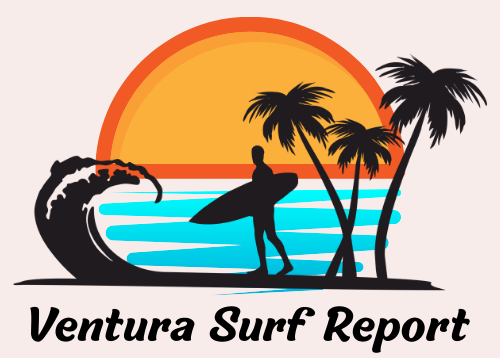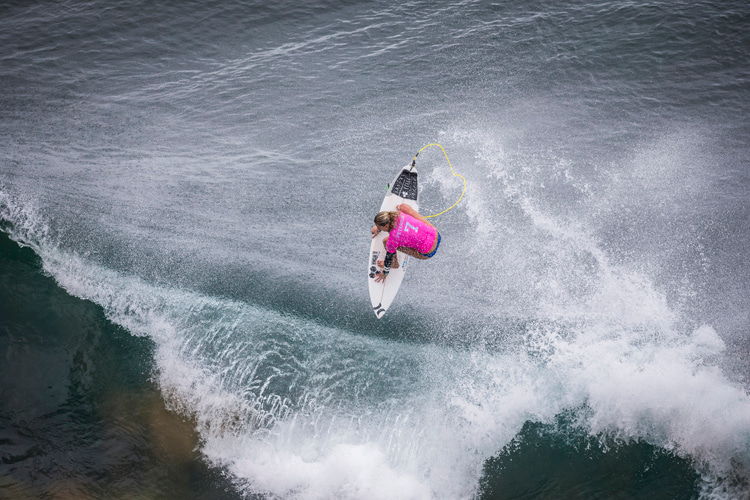
The physics of surfing is quite complex and involves many fluid dynamics variables constantly interacting in non-linear ways.
It all starts when we drop the surfboard into the water and ends the cycle of hydrodynamical exchanges when surfers finish their rides.
There are basically four main general primary forces driving the surf: buoyancy, gravity, drag, and lift.
And then, a few other more surfer-applied forces suggested by the legendary surfboard shaper Bob McTavish in “The Surfboard Book”: roll, pitch, and yaw, three terms used in aviation that define axes of rotation.
After learning these forces, it’s hard not to think about surfing as a really magical optimal combination of balanced forces.
So, it’s actually the sum of several forces – some of them opposed to each other – that makes possible the “miracle” of wave riding.
Without getting into much scientific detail and equations, let’s break down the hydrodynamic forces that drive surfing.
1. General Forces
1.1 Buoyancy

Imagine your surfboard and you as a package floating on water. Buoyancy is the upward push you feel because you’re displacing (pushing aside) water beneath you.
The heavier you are, the more water you move, and the stronger that upward push becomes – until it exactly balances your weight.
That’s why a heavier surfer sinks the board deeper until buoyant force and gravity even out.
When you paddle or hang in a slow part of the wave, buoyancy is your best friend. It keeps you riding high on the surface instead of slogging through water.
And when you drop down the face of a wave, buoyancy helps pop you out and forward, giving you that perfect launch into the ride.
1.2 Gravity

Gravity is the invisible tug between you, your board, and the Earth. It’s what pulls you down the wave face toward the trough.
The steeper the wave, the more gravity lines up with the slope, and the faster you’ll go.
But watch out: if your board can’t keep you up (buoyancy struggles to match gravity), you’ll dig into the water, eventually pearl, or slow down.
Strike the right balance, though, and gravity becomes your engine powering down the line.
1.3 Drag

Drag is the brake on your ride, pushing against your board as you move across the water.
There are two flavors:
First, friction drag comes from water rubbing against your board’s bottom. More speed or more board-in-water area means more rubbing, which means more drag.
At planing speeds, though, only part of your board touches water, so friction drag can actually drop.
Then, form drag happens when you’re plowing through water instead of skimming it.
Point your board’s nose up too much, and you increase the “apparent area” that water pushes against, slowing you down more.
A smooth, flowing shape helps – you don’t want a bluff front that creates a big, turbulent wake behind you.
In surfing, Newton’s third law plays out in drag: your board pushes on water, water pushes back on your board, and that opposing force is drag.
1.4 Lift

Lift is what helps your board pop up onto the water’s surface at speed – a lot like a barefoot skier. Once you reach a certain velocity, planing lift (also known as hydroplaning) kicks in, and buoyancy takes a back seat.
The angle of attack – how tilted your board is against the water – controls lift.
Tilt up more, and lift rises… but so does form drag. Finding that sweet spot is what shapers aim for.
Lift also hides in your fins and board bottom:
- Side fins use an asymmetrical shape to push against the wave face, holding you tight and pulling you into the curve;
- Bottom concaves and channels direct water flow to create upward pressure under your board;
- Wave face flow is the big one: as water curls up the face, it lifts you and helps you climb, turning potential energy into speed. Think of pumping along a wave like pedaling a bike – you insert the rail, let the wave push you up, then carve down to unleash that built-up energy;

2. Surfer-Applied Forces
Beyond the natural forces, surfers steer and spin their boards with three turning motions:
- Roll: Lean on your heels or toes to tip the board’s rails into the water. That’s your classic carve;
- Pitch: Shift your weight forward or back. Press the front to plane faster or jam the back to stall;
- Yaw: Twist your body around a vertical axis, like in a skateboarding tic-tac or an off-the-lip. This move can spin you 180 degrees or more;
Lastly, getting low in your stance or popping up higher tweaks how your board responds.
Bend your knees, shift your hips, and you’re fine-tuning every turn, pump, and barrel ride – all by using your own body as the control panel.
Bibliography and References:
S. McCagh. “The Surfboard Book.” McCagh O’Neill Pty Ltd, 2013
Words by Luís MP | Founder of SurferToday.com


Leave a Reply